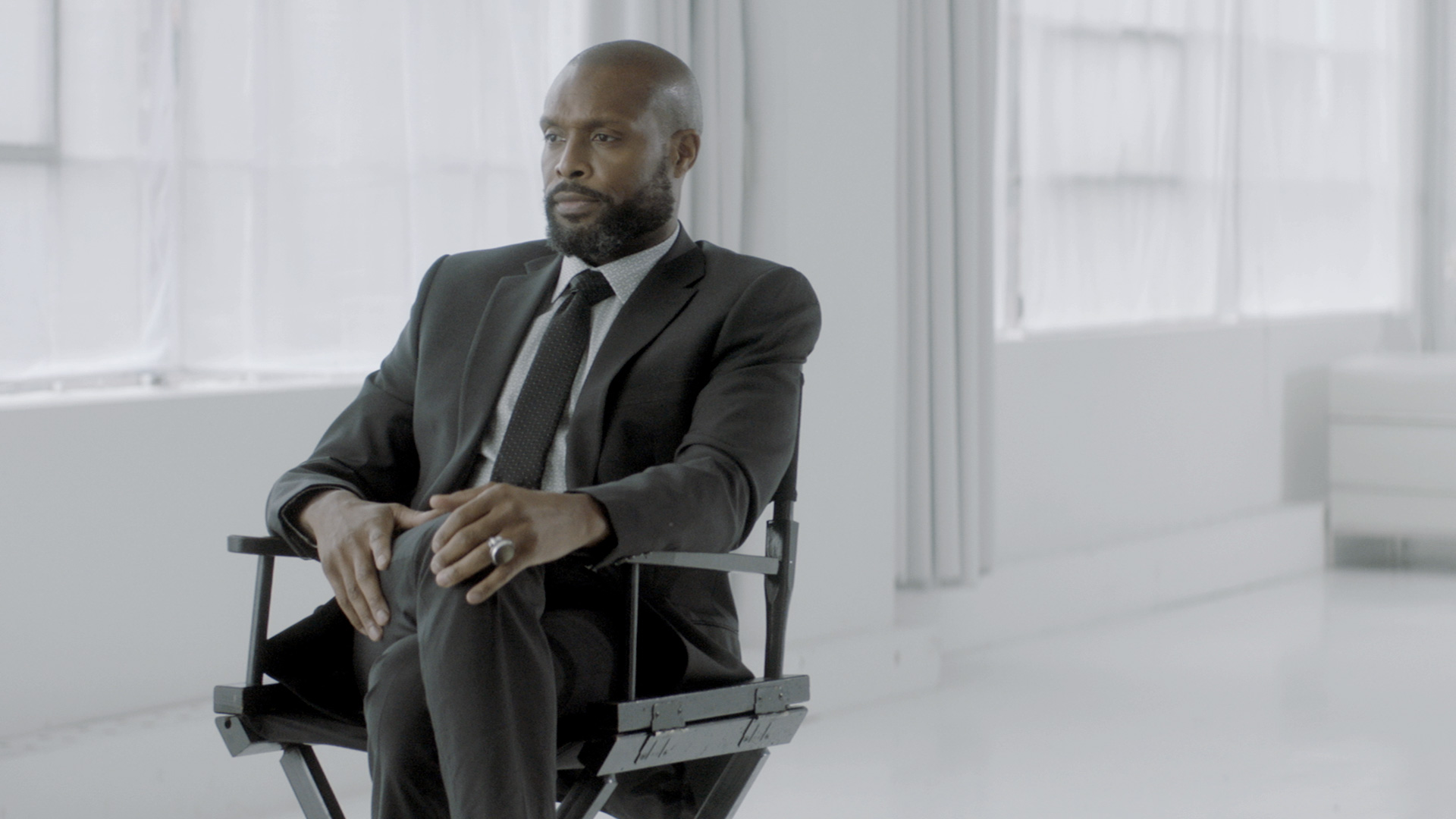Movies and television are often an escape from and a reflection of life unfolding. They also can play an outsize role in shaping and reinforcing cultural beliefs and attitudes about race, both in the United States and internationally. Yet for the thousands of people who toil in a range of on- and off-screen positions in the sprawling film and TV industry, movies and television are something much more grounded—they are a job. And for Black professionals trying to build and sustain a career in film and TV, the industry has been, by many of their accounts, a relatively unwelcoming workplace.
While a certain amount of progress has been made with on-screen talent in recent years, and although several entertainment companies are starting to make strides toward diversity and inclusion, our new analysis shows that inequity persists and is deeply entrenched across the film and TV ecosystem. Data on the levels of diversity and representation on-screen have been available for several years. But those numbers alone, as important as they are, tell only one part of the story. We examined in detail the racial complexities and challenges of this dynamic workplace, analyzing the entire film and TV ecosystem—including studios, networks, production and streaming companies, and distributors—through the lens of the individuals who must navigate it: on-screen talent, as well as off-screen writers, producers, directors, executives, agents, crew members, and beyond.
We wanted to understand the lived experience of Black professionals along the end-to-end journey of content production and distribution, from applying for an entry-level position or pitching new ideas to shooting on location and distributing a finished product. To shed light on the scale of the racial disparities and the potential economic opportunity in addressing them, we analyzed data and reviewed multiple research reports on thousands of films and TV shows. We also conducted anonymous interviews with dozens of film and TV professionals, writers, directors, producers, agents, actors, and executives, enabling them to speak openly about the system-level obstacles and routine indignities they encounter (see sidebar “About the research”). We collaborated in this research with the BlackLight Collective, a coalition of Black leaders, artists, and executives who work in varied capacities across the film and TV industry. We hope that focusing on the experiences of those who face so many barriers will help spur solutions to improve the inclusivity of the industry for all underrepresented groups.

Barriers that undermine equity in content development, financing, marketing, and distribution come at a substantial cost to the film and TV industry.
Our findings, which build on and corroborate McKinsey’s recent research on the Black experience in corporate America, include the following:
- By addressing the persistent racial inequities, the industry could reap an additional $10 billion in annual revenues—about 7 percent more than the assessed baseline of $148 billion.1 Fewer Black-led stories get told, and when they are, these projects have been consistently underfunded and undervalued, despite often earning higher relative returns than other properties.
- The handful of Black creatives who are in prominent off-screen, “above the line” positions (that is, creator, producer, writer, or director) find themselves primarily responsible for providing opportunities for other Black off-screen talent. Unless at least one senior member of a production is Black, Black talent is largely shut out of those critical roles.
- Emerging Black actors receive significantly fewer chances early in their careers to make their mark in leading roles, compared with white actors, and they have a lower margin for error.
- Both film and TV still have very little minority representation among top management and boards; film in particular is less diverse than relatively homogenous sectors such as energy, finance, and transport.
- A complex, interdependent value chain filled with dozens of hidden barriers and other pain points reinforces the racial status quo in the industry. Based on our research, we catalogued close to 40 specific pain points that Black professionals in film and TV regularly encounter as they attempt to build their careers.
- There are four key steps that film and TV companies can take to advance racial equity in entertainment and beyond. These steps would need to be cross-cutting and, ideally, shepherded by an independent, third-party organization that the industry creates.
Today, Black Americans make up 13.4 percent of the US population, and that percentage will increase over the next few decades.2 Just as the racial wealth gap is constraining the US economy, the film and TV industry will continue to leave money on the table if it fails to advance racial equity (see sidebar “The value of achieving racial equity in Hollywood”).
However, the unique characteristics of the film and TV industry make achieving equity a complex, system-level challenge. Tight-knit, interdependent networks dominate the landscape; unlike in many other industries, a single company’s efforts to change the racial dynamic inside its own four walls can do only so much for the entire ecosystem. In any given week, let alone an entire career, a professional working in Hollywood might have to traverse multiple separate entities—agencies, unions and guilds, studios, networks, production houses, financiers, festivals, critics, and awards establishments. At the same time, strong accountability structures (uniformly enforced HR processes and rules, for instance) and transparency are lacking in many cases. Work settings can be small and informal, including far-flung shooting locations outside the United States; the work itself is often temporary and contract based. In the same way that collective action is needed to advance racial equity in corporate America, real and lasting change in film and TV will require concerted action and the joint commitment of stakeholders across the industry ecosystem.
The state of Black representation on- and off-screen
Black talent is underrepresented across the industry, particularly off-screen (Exhibit 1). Our research on positions of creative control reveals that less than 6 percent of the writers, directors, and producers of US-produced films are Black. In some genres (the superhero genre, for example), representation is even lower.

Our conversations with professionals in the field reveal that Black talent tends to be shut out of projects unless senior team members are Black. The data show that films with a Black producer (only 8 percent of all US-produced films) or a Black director (6 percent of all films) are significantly more likely to have a Black writer. And if a film’s producer is Black, the film is far more likely to have a Black director, too (Exhibit 2). The same holds true in TV: when a show’s creator is Black, it is much more likely that the showrunner (the leading producer) is Black. Specifically, more than four out of five shows with a Black creator have a Black showrunner. However, out of all showrunners, only 5 percent are Black.

Black professionals are also severely underrepresented in executive decision-making roles throughout the industry (department heads or top management, for example). Eighty-seven percent of TV executives and 92 percent of film executives are white. The film industry in particular remains disproportionately white, even compared with such homogenous sectors as energy and finance (Exhibit 3). This underrepresentation extends to the buying side, where Black distributors make up a small fraction of the total.

The lack of Black executives in film and TV has troubling knock-on effects throughout the industry. For example, as one Black executive explained, “Many former studio execs get production deals as independent producers affiliated with the studio, so whatever inequity is prevalent in the studios will carry over to the mix of producers.”
As for the state of play in front of the camera, the situation, while improving of late, remains problematic. The prominence of certain films and TV series with Black leads obscures the fact that Black actors are still underrepresented on-screen. While their overall representation among film casts is broadly in line with the Black share of the US population (13.4 percent), Black actors play only 11 percent of leading film roles and are often funneled to race-related projects, which typically receive lower investment in both production and promotion.
TV presents a mixed picture: in 2019, about 14 percent of leads on cable programs were Black, but Black actors made up less than 12 percent of leads on broadcast shows. The share of streaming shows with Black leads—less than 5 percent in 2019—is less than half that of broadcast shows, and only a third of what it would be if it mirrored current demographics (Exhibit 4). While all three platforms have made some progress in terms of minority representation at large, streaming’s explosive growth makes its showing on diversity going forward particularly critical for the industry.3

Since we concluded our research, Netflix commissioned an independent report4on inclusion in its content. This analysis by the USC Annenberg Inclusion Initiative highlights much higher on-screen representation in Netflix’s productions, with Black talent accounting for 15.2 percent of lead or co-lead roles across film and scripted series for the two-year period from 2018 to 2019.5 Still, the report also confirmed very low percentages of Black talent in above-the-line roles (creator, producer, writer, or director); Black above-the-line talent made up only 6.6 percent of those roles for films and 7.9 percent for scripted series across 2018 and 2019. Similar to the findings in our review of theatrical releases, these above-the-line roles had a profound multiplier effect on representation. When a Black creator was behind a Netflix series, for example, 72 percent of series regulars were Black, while only 15.4 percent were Black when a non-Black creator developed a series. The broad implication of this phenomenon is that Black creatives are carrying the weight of Black diversity and inclusion, or, as the report concluded more generally, “underrepresented creatives were primarily responsible for the on-screen inclusion in Netflix films.”
Barriers to entry
Black talent faces a number of obstacles to entering film and TV at the outset, many of which are hidden or rarely acknowledged. Among these are financial and social barriers, as well as racial bias.
Financial. Breaking into the industry is often only possible following years of work without pay or for pay that is insufficient to cover basic necessities (for instance, paying off student loans or supporting less well-off family members). As one white executive acknowledged, when talent is just starting out, work in the industry is “considered a privileged apprenticeship. The pay is sh*tty and, let’s be honest, that rules certain people out from the job.” McKinsey research has shown that there is a wide and persistent gap in wealth between Black and white families in the United States, with the median Black family having about $150,000 less than the median white family. The result: low or no pay excludes many Black Americans from Hollywood from the start. Work in the industry also tends to be temporary and contract based, making it less accessible to those who do not have personal savings, an inheritance, or family money to fall back on.
Social. Our research underscores that jobs in the industry often go to insiders’ acquaintances or members of their extended networks, who tend to be overwhelmingly white and upper-class. As one white producer told us: “I got my first job because my boss went to Stanford. Whenever he had an opening, he’d send an email to the arts clubs of Harvard, Stanford, and Princeton.” Despite some progress in recent years, the majority of Black college students are not concentrated in a handful of elite universities. Without a formal search or recruitment process or an established protocol for hiring, industry access can come down to who you know.
Racial bias. Our research points to a pattern of entrenched industry gatekeepers such as agencies, unions, and guilds responding more favorably to people who look, act, sound, and write like they do. As of 2015 (the most recent year for which data are available, though many industry participants say that modest progress has been made since then), about 90 percent of the agents and executive staff at the industry’s top three talent agencies were white. Across leads, writers, and directors, the share of Black talent at those same agencies was less than half the Black share of the US population. As one Black writer recounted, “Even though I was staff writing on a popular, well-received show, it was still tough to find an agent. Your average agent is a 50-year-old white guy … who never had to stretch to see [himself] in other people or spaces. So [such agents will] have a harder time representing people they don’t personally relate to.” It can be an equally difficult experience for the relatively small number of Black agents in the business. “I was one of few women and definitely few Black women there period, let alone in leadership, so there was no one to look up to,” one Black agent told us. “You learn to try not to take up too much space and speak only when you have something important to say. But then peers and others behind you get promoted ahead of you even when you are bringing more in.”

McKinsey Institute for Black Economic Mobility
Ongoing challenges
Unfortunately, the challenges facing Black talent extend far beyond access and representation. Black professionals in film and TV face ongoing barriers and inequities, even once they’re “in the door.” Based on our interviews, we surfaced close to 40 pain points that these industry participants must endure throughout the entire content journey, from talent or idea discovery to the release of the film or TV series (Exhibit 5).

Getting fewer at bats
Even for those who do get a real chance in the industry, Black professionals have much less room for failure than their white counterparts do. Black actors in particular tend to get fewer chances to break out or get ahead. In the first ten years of their careers, emerging Black actors get an average of six leading roles, while their white counterparts get nine (Exhibit 6). Having fewer opportunities also makes it harder for these actors to make ends meet; they often go two or three years between lead roles, which means they lack the consistent income that would help them stay in the industry. This experience is all too familiar for off-screen talent as well; selling a script or getting a project off the ground to direct or produce can often take years.

And not only does Black talent have fewer opportunities, these individuals often can’t afford a single box-office or ratings flop. As another Black executive explained, “Black creators and actors need to be able to fail and get another chance like everyone else. Currently, they cannot.”
Stereotyped and set apart
Our analysis also throws into sharp relief the creative limitations imposed on Black talent. Both on- and off-screen, Black talent is pigeonholed and funneled to race-related content, which often plays into stereotypes.
Consider that films with two or more Black professionals working off-screen6 (as a producer, writer, or director, for example) are twice as likely as other films to be either race-specific (a biopic such as Lincoln or Selma, for instance), or race adjacent (for example, a comedy such as Barbershop 3 or Crazy Rich Asians, where race is critical to the style or topic). This is true despite the fact that such race-related material accounts for only a third of all films, with race-agnostic titles (A Star is Born,Deadpool) making up the rest (Exhibit 7).

In the words of one creative executive, “When [studios are] looking for Black content, they’re looking for Wakanda or poverty, with no in-between.” Such stereotypical depictions prevent Black actors from advancing in the industry and fulfilling their creative potential. As a Black actor explained, “I have to take stereotypical work, because that’s what’s out there, but then when I take those roles, they say that’s all I am capable of.”
White executives rejecting a new idea don’t even hesitate to tell Black talent “what’s going to work for Black people” or to “question the authenticity of experiences of Black characters,” Black industry participants noted.
Undervalued and held back
Being largely shut out of race-agnostic content is bad enough creatively. But it also comes with its own financial limitations. Race-agnostic films receive three times the average production budget that race-related films do. Put simply: funneling Black talent to race-specific or race-adjacent films means excluding this talent from the projects with the strongest funding.
But Black off-screen talent faces funding disparities in race-agnostic films as well. Films of any kind with two or more Black professionals in off-screen creative roles (producer, writer, or director, for example) receive significantly lower production budgets—more than 40 percent less than other films (Exhibit 8). The disparities are particularly notable given that these films make 10 percent more in box-office revenues per dollar invested in prints and advertising, compared with films with no or just one Black creative professional. What’s more, the average production budget for films with a Black lead or co-lead is a quarter less than the budget for films with no leading Black actors.

There is also a widespread misperception in the industry that content starring Black actors will not perform well with international audiences. In 2019, the top films with Black leads were distributed in 30 percent fewer international markets on average—yet they earned nearly the same global box-office sales as films with white leads and earned more than those films on a per-market basis. (Nearly two-thirds of the box-office earnings for the Men in Black film series came from the international box office.)
Fueling this issue is the lack of diversity among marketing teams, executives, and other industry decision makers. Black professionals cite white decision makers’ failure to relate to Black content as a key obstacle to financing. As one Black executive explained, “Marketing teams need to be on board to select a film, but if they don’t feel comfortable with the story, it limits the number of buys.” Similarly, the executive added, “when executives feel like they can’t personally relate to your content, they don’t bid.”
Black professionals in film and TV face ongoing barriers and inequities, even once they’re ‘in the door,’ [including] close to 40 pain points that they must endure throughout the entire content journey.

Unsupported and passed over
Every day, and over the course of their careers, Black professionals throughout the industry must navigate an ecosystem that is set up to cater to white talent. Black actors, for example, often have to shoulder considerable expenses for lighting, hair, and makeup when white talent is treated as the norm. One Black executive recalled a department head’s repeated refusal to hire an appropriate hair stylist for her client, who was Black. When the executive raised her concerns with the film producer, she was met with complacency: after five or six conversations about the issue, the producer commented that “the industry needs to start hiring more Black actors so this does not happen so often.” As the executive put it, “I had to push back on that. ‘What if you’re the problem? You are more willing to have more than a handful of conversations with me about this than to talk to your department head about hiring adequately. In what other role on this set would you tolerate such a clear inability to do one’s job?’”
This is just one example of a “Black tax” that both aspiring and established Black professionals in the industry find they must pay. Whether it is having to fight (or pay out of pocket) for what others typically don’t have to or it is needing to advocate on their own for greater racial equity, an unfair burden falls almost entirely on Black talent or creatives. The sense of frustration from prominent Black talent is immediate and clear; many remark about the exhaustion of constantly being asked why racism exists, a question their white counterparts never have to answer. It should come as no surprise, then, that some of those same now-celebrated Black professionals on- and off-screen have lamented about how often and how close they came early in their careers to giving up their dreams in the face of so many obstacles.
Our research suggests that discrimination of this kind is commonplace and that Black women in particular face heightened challenges. They are more likely to face isolation as an “only” and more likely to lack role models who share their identity. As in other industries, many Black women in film and TV report having to work harder than their white, male counterparts—for less recognition.
Black professionals also lack the sponsorship necessary to support their advancement. Our latest research on race in the workplace shows that across the US private sector, less than one-third of Black employees have a sponsor. Our interviews with Black professionals show that Hollywood is no exception. In fact, by many accounts, the situation has gotten worse over the past two to three decades.
“When I started out in the industry some 30 years ago, it wasn’t a desert,” one industry veteran recounted. “I had many Black colleagues who seemed to be on the path to success—studio vice presidents and producers of top shows. But at some point, they hit a wall and ultimately left the industry. Each was a real loss.” This person concluded: “[Since deceased TV executive] Brandon Tartikoff ran NBC through much of the ’80s, and he hired Black executives. He didn’t need a mandate to create opportunities; he just did what was right. There have been [other] people who didn’t need diversity initiatives [to do the same thing]; there just haven’t been enough of them.”

As in other industries, many Black women in film and TV report having to work harder than their white, male counterparts—for less recognition.
Quick to be cut
Black talent is often the last in and the first out: already underrepresented in the industry, Black professionals are particularly vulnerable to market shocks. As our research shows, the share of films with Black talent significantly dropped after studios cut their output of films starting in 2008–09 and had still not fully recovered by the end of 2019 (Exhibit 9). One Black executive put it bluntly: “There was a massive contraction in the number of films produced, and the international box office—where studios believe it’s harder to ‘sell Black’—was becoming increasingly important. It felt natural that Black talent was the hardest hit as studios reevaluated their slates.”

Changing the industry
Increasing the amount of racial diversity and representation in film and TV is no small task. Overcoming the hidden barriers and cozy networks that still dominate the complex ecosystem will require sustained collaboration among many different organizations. A few have begun to take individual, discrete steps focused on increasing Black-led content, while Fortune 1000 companies pledged $66 billion last year to racial-equity initiatives in the wake of George Floyd’s killing. As encouraging as those moves are, however, it will likely take sweeping, industry-wide changes, perhaps spearheaded by an independent, third-party organization, to change this workplace. We recognize that Black talent is only one of many underrepresented groups in film and TV and hope that the industry, by addressing the system-level challenges and barriers that stand in the way, will be in a position to become more equitable and inclusive for all, including Asian Americans, members of the Latinx community, LGBTQ+ individuals, Native Americans, people with disabilities, and others.
These changes will not take place overnight, but our research has revealed a set of four measures that we believe industry leaders can take—together—to begin to increase diversity and representation in film and TV.
1. Ensure diverse representation, especially among off-screen talent and executives
Key entities such as studios, networks, streaming companies, agencies, and production companies could aspire to achieve a specific target for Black and nonwhite representation across all levels and roles—including in the boardroom, which remains predominantly white—and make those goals public to hold themselves accountable. Matching the share of the US population that is Black (13.4 percent) and nonwhite (40 percent) would seem a logical place to start. Industry leaders could focus on increasing representation in important decision-making and gatekeeping positions, including hiring committees. They could also set intersectional targets, including for representation of Black women.
To help meet these targets, companies should think about expanding recruiting—to state schools and historically Black colleges and universities (HBCUs), for example, and beyond Los Angeles and New York. (Expanding geographical access is particularly critical given that nearly 60 percent of the Black American labor force is concentrated in the South.) They should also look at the possibility of boosting and formalizing mentorship and sponsorship programs, paying interns, assistants, and early-career talent a living wage, and offering trade-school programs for so-called below-the-line production jobs (crew and technicians, for example), as well as temporary fee deferrals for new guild members.
The industry’s heavily interconnected value chain means that different stakeholders would need to act in concert; no single studio or agency can make the industry equitable. The underrepresentation of Black talent is due in part to racial bias among industry decision makers and gatekeepers, and these insiders would ideally commit to changing their own beliefs and behavior. As more Black professionals assume decision-making roles, dynamics within the industry ecosystem should improve: increasing the representation of Black talent in key off-screen roles—including producer, writer, director, and show creator—will have a multiplier effect, increasing representation among writers, directors, showrunners, and other talent.
No discussion of diversity and inclusion in film and TV would be complete without also including an essential part of the ecosystem: critics, awards, and film festivals. The recent revelation that the Hollywood Foreign Press Association, which votes on the Golden Globes, doesn’t have a single Black member was further proof of the room for change in the organizations that determine who gets recognized annually for their work on- and off-screen in such awards as the Oscars, Emmys, and the respective guilds (for actors, producers, directors, and writers, for instance).
2. Increase transparency and accountability
Industry participants should give serious thought to tracking and disseminating their progress toward racial equity to make sure it occurs. We would encourage these participants to publish intersectional reporting (including data on race, ethnicity, and gender) about their employees, leadership, and talent rosters more regularly and to share these reports with an external, independent organization (see step four below). They should also think about adopting best practices from other industries by formalizing all performance evaluations and promotions to help limit the effects of systemic bias and reduce the hidden barriers facing Black talent. Studios could develop and disseminate evaluation rubrics and implement formal, biannual performance reviews, for example, while strengthening HR’s presence and authority out of the office—on location, for instance.
Another important step would be to make clear to all employees (including full-time but also freelance employees, who make up a significant portion of the industry) and key partners (such as small production houses) what the inclusive behavior that is expected looks like—in a variety of work settings; companies should also consider regularly pointing to and celebrating examples of such model behavior in practice. Finally, by tying executive bonuses to diversity targets, companies can ensure that leaders are held to account for progress on racial equity.
Industry leaders may want to keep the ‘Black tax’ top of mind. It would seem unreasonable to expect Black talent to [keep] trying to reform this industry on their own.

3. Seek and financially support a wide range of Black stories
Demand for diverse content is on the rise, and industry leaders are competing for diverse audiences. Between 2017 and 2019, for example, demand more than doubled for the top debut series with diverse casts (those in which racial and ethnic minorities make up at least 40 percent of members). To advance racial equity—and to tap this significant financial opportunity—industry leaders should strongly consider dedicating up-front funding to increasing diverse content and talent. Studios, for example, could start by committing 13.4 percent of their annual budget to projects—again, to mirror the Black share of the US population—with not just Black leading actors but also Black producers, writers, and directors. They could fund initiatives across the pipeline, targeting development, production, marketing, and distribution. Initiatives could include dedicated training and sponsorship programs (including networking opportunities) for diverse creators, as well as a certain number or share of pitch slots regularly reserved for underrepresented talent. These efforts would not be limited to any single, short-term campaign. Studios and producers can also focus on expanding the international distribution of films with Black talent.
4. Create an independent organization to promote diversity
When contemplating different possible approaches to increasing diversity in film and TV, industry leaders may want to keep the “Black tax” top of mind. It would seem unreasonable to expect Black industry professionals to continue spending countless hours trying to reform this vast, complex industry on their own, time they could otherwise be spending creating the next hit series or blockbuster movie franchise. But doing so would also be wholly insufficient to the task at hand, given the magnitude of the barriers and the need for broad-based, collective action to overcome them. This is particularly critical in film and TV, where many Black professionals have expressed concerns about the risks of speaking up about conditions in the industry.
To effect genuine, sustainable change, industry leaders should strongly consider creating a dedicated, independent advocacy organization to advance racial equity in their field—a move that has proven successful in a number of other contexts. Such an arm’s-length group would need vocal backers and strong partnerships with film and TV leaders to boost its reach and influence across the industry. A well-funded, third-party organization of this nature could strengthen individual efforts by developing and scaling best practices, collecting and disseminating intersectional data, and reporting on progress across the industry.
By stifling Black talent throughout the film and TV industry ecosystem—and at every step of the content-development process—Hollywood is leaving at least $10 billion in revenue on the table each year. Achieving racial equity will make the film and TV sector more just and more profitable.
Equally as critical, improving racial equity should prove to be a boon for audiences. When the on-screen and off-screen representation of Black talent matches the share of Black Americans and when the industry succeeds in dismantling the ubiquitous workplace barriers preventing Black creators from telling a range of stories, viewers of all races will gain access to the many different products of Black creative expression. Ultimately, the reshaping of the film and TV ecosystem will play a role in reshaping ideas on race—and the advancement of racial equity—in America and beyond.



